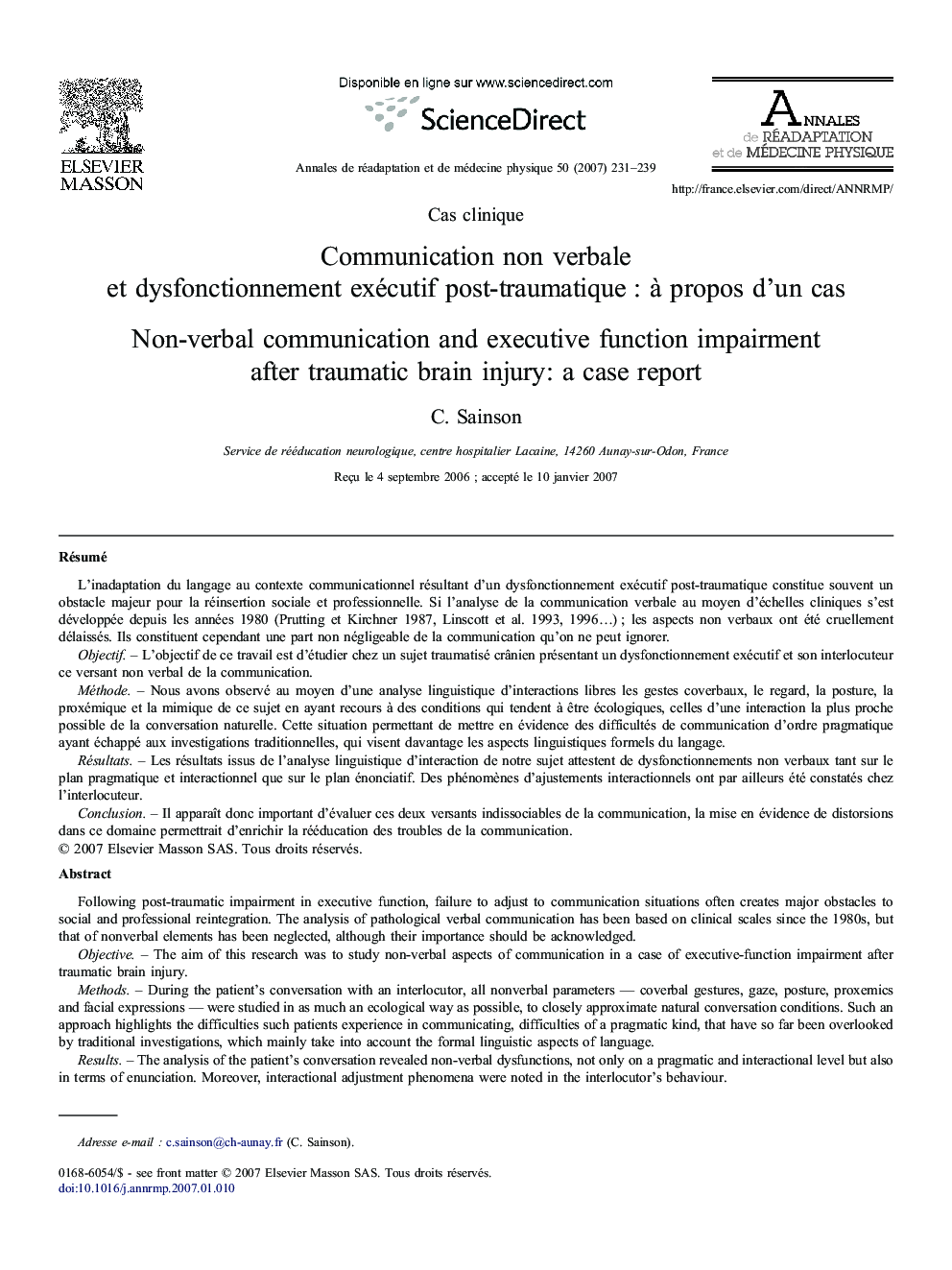| کد مقاله | کد نشریه | سال انتشار | مقاله انگلیسی | نسخه تمام متن |
|---|---|---|---|---|
| 4040267 | 1264296 | 2007 | 9 صفحه PDF | دانلود رایگان |

RésuméL'inadaptation du langage au contexte communicationnel résultant d'un dysfonctionnement exécutif post-traumatique constitue souvent un obstacle majeur pour la réinsertion sociale et professionnelle. Si l'analyse de la communication verbale au moyen d'échelles cliniques s'est développée depuis les années 1980 (Prutting et Kirchner 1987, Linscott et al. 1993, 1996…) ; les aspects non verbaux ont été cruellement délaissés. Ils constituent cependant une part non négligeable de la communication qu'on ne peut ignorer.ObjectifL'objectif de ce travail est d'étudier chez un sujet traumatisé crânien présentant un dysfonctionnement exécutif et son interlocuteur ce versant non verbal de la communication.MéthodeNous avons observé au moyen d'une analyse linguistique d'interactions libres les gestes coverbaux, le regard, la posture, la proxémique et la mimique de ce sujet en ayant recours à des conditions qui tendent à être écologiques, celles d'une interaction la plus proche possible de la conversation naturelle. Cette situation permettant de mettre en évidence des difficultés de communication d'ordre pragmatique ayant échappé aux investigations traditionnelles, qui visent davantage les aspects linguistiques formels du langage.RésultatsLes résultats issus de l'analyse linguistique d'interaction de notre sujet attestent de dysfonctionnements non verbaux tant sur le plan pragmatique et interactionnel que sur le plan énonciatif. Des phénomènes d'ajustements interactionnels ont par ailleurs été constatés chez l'interlocuteur.ConclusionIl apparaît donc important d'évaluer ces deux versants indissociables de la communication, la mise en évidence de distorsions dans ce domaine permettrait d'enrichir la rééducation des troubles de la communication.
Following post-traumatic impairment in executive function, failure to adjust to communication situations often creates major obstacles to social and professional reintegration. The analysis of pathological verbal communication has been based on clinical scales since the 1980s, but that of nonverbal elements has been neglected, although their importance should be acknowledged.ObjectiveThe aim of this research was to study non-verbal aspects of communication in a case of executive-function impairment after traumatic brain injury.MethodsDuring the patient's conversation with an interlocutor, all nonverbal parameters — coverbal gestures, gaze, posture, proxemics and facial expressions — were studied in as much an ecological way as possible, to closely approximate natural conversation conditions. Such an approach highlights the difficulties such patients experience in communicating, difficulties of a pragmatic kind, that have so far been overlooked by traditional investigations, which mainly take into account the formal linguistic aspects of language.ResultsThe analysis of the patient's conversation revealed non-verbal dysfunctions, not only on a pragmatic and interactional level but also in terms of enunciation. Moreover, interactional adjustment phenomena were noted in the interlocutor's behaviour.ConclusionThe two inseparable aspects of communication — verbal and nonverbal — should be equally assessed in patients with communication difficulties; highlighting distortions in each area might bring about an improvement in the rehabilitation of such people.
Journal: Annales de Réadaptation et de Médecine Physique - Volume 50, Issue 4, May 2007, Pages 231–239